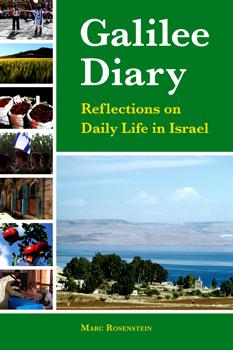4/24/13 Wednesday – Israel Connections
HTTP/1.1 200 OK Server: nginx Content-Type: text/html; charset=utf-8 X-Drupal-Cache: HIT Etag: “1366818278-0″ Content-Language: en Link: ; rel=”shortlink”,; rel=”canonical” X-Generator: Drupal 7 (https://drupal.org) Cache-Control: public, max-age=10800 Expires: Sun, 19 Nov 1978 05:00:00 GMT Vary: Cookie,Accept-Encoding Last-Modified: Wed, 24 Apr 2013 15:44:38 GMT X-AH-Environment: prod Content-Length: 97069 Date: Wed, 24 Apr 2013 15:50:08 GMT X-Varnish: 1671774449 Age: 0 Via: 1.1 varnish Connection: keep-alive X-Cache: MISS Galilee Diary: Independence Day I | Reform Judaism
By Rabbi Marc Rosenstein, 4/24/2013
And the Lord said to Moses, “Command the people of Israel and say to them, ‘My offering, my food for my offerings by fire, my pleasing odor, you shall take heed to offer to me in its due season.'”
–Numbers 28:1-2
When I spent a semester in Haifa in 1962 on NFTY’s EIE exchange program, Independence Day left a very strong impression on me. In the evening, the main street of the Hadar business district was filled with circles of people of all ages dancing the Horah, and a happy, carnival atmosphere prevailed. The next day we went to a military parade with air force flyovers. Over the years, the evening celebration has morphed into something a bit more formal and commercial. Municipalities throughout the country vie with each other to snag the most popular stars (at huge cost to the taxpayers) to perform on open stages. Our own local county government has avoided this by mounting an elaborate – yet modest – pageant involving local performers, dance troupes, etc. And of course, fireworks displays.
The military parades were discontinued years ago. There are, instead, open houses at various army bases – the air force and tank corps are especially popular. The parks are packed (unless it rains, like it did this year), less with nature hikers than with picnickers: Somehow, the ultimate symbolic observance of Yom Ha’atzma’ut has become the activity of grilling meat – generally on small portable barbecues, which, due to their poor design, require extensive fanning of the coals with a folded newspaper or piece of cardboard (hence, the slang for what one does on Yom Ha’atzma’ut: nafnaf, which means “fanning”). It might be possible to explain this custom as symbolic of the messianic restoration, when according to tradition the Temple will be rebuilt and animal sacrifices resumed. Could the pall of smoke hovering over our nature reserves on this day be a reminder of the smoke rising from the altar in Jerusalem? It seems to me that many of the people who find this prospect distasteful are the very same people who stand in line in the supermarket to stock up on steaks and kabobs to grill on Yom Ha’atzma’ut. In any case, that explanation seems a bit far-fetched, and we are left with no clear answer. Meanwhile, Israeli Arabs, many of whom harbor ambivalence (at least) toward Zionism, face a dilemma: Since they have the day off from work and school, is it OK to go out to a park and have a barbecue – or is that like an American Jew putting up a Christmas tree; is the celebration fraught with ideological meaning, or is it just a pleasant way to spend a spring day?
For the Zionist Orthodox, Yom Ha’atzma’ut is a religious holiday, and the observance of the day includes festive prayers in the synagogue, with the recitation of the Hallel Psalms that were reserved, before 1948, for biblical holidays and Chanukah. The State of Israel is, for this segment of the population, indeed the first stage of the messianic redemption, and hence has theological significance which demands liturgical recognition. It is a popular day for holding bar mitzvah celebrations, because it is one of the rare holidays when the Torah is read in a festive service, yet the restrictions of Shabbat and Yom Tov do not apply, so one can drive, barbecue, etc.
The main way to tell the difference between a Zionist Orthodox community and a non-Zionist one (what we usually call Charedi, or Ultra-Orthodox), is by looking at the liturgy for the morning of Yom Ha’atzma’ut: In the non-Zionist synagogue, the service is the regular weekday liturgy with no additions – because for this population, Yom Ha’atzma’ut is not a holiday; if anything, it is a day of sadness, as it symbolizes the secular attempt to force redemption – which only pushes it farther away.
It seems to me that the state is a gift to be celebrated. But as sometimes happens, the manufacturer forgot to pack the user manual, so we are left to trial and error. We should be grateful for the gift; sooner or later we’ll figure out how to operate it.
Submit a blog post
Share your voice: ReformJudaism.org accepts submissions to the blog for consideration.
HTTP/1.1 200 OK Server: nginx Content-Type: text/html; charset=utf-8 X-Drupal-Cache: HIT Etag: “1366818278-0″ Content-Language: en Link: ; rel=”shortlink”,; rel=”canonical” X-Generator: Drupal 7 (https://drupal.org) Cache-Control: public, max-age=10800 Expires: Sun, 19 Nov 1978 05:00:00 GMT Vary: Cookie,Accept-Encoding Last-Modified: Wed, 24 Apr 2013 15:44:38 GMT X-AH-Environment: prod Content-Length: 97069 Date: Wed, 24 Apr 2013 15:50:08 GMT X-Varnish: 1671774449 Age: 0 Via: 1.1 varnish Connection: keep-alive X-Cache: MISS Galilee Diary: Independence Day I | Reform Judaism
By Rabbi Marc Rosenstein, 4/24/2013
And the Lord said to Moses, “Command the people of Israel and say to them, ‘My offering, my food for my offerings by fire, my pleasing odor, you shall take heed to offer to me in its due season.'”
–Numbers 28:1-2
When I spent a semester in Haifa in 1962 on NFTY’s EIE exchange program, Independence Day left a very strong impression on me. In the evening, the main street of the Hadar business district was filled with circles of people of all ages dancing the Horah, and a happy, carnival atmosphere prevailed. The next day we went to a military parade with air force flyovers. Over the years, the evening celebration has morphed into something a bit more formal and commercial. Municipalities throughout the country vie with each other to snag the most popular stars (at huge cost to the taxpayers) to perform on open stages. Our own local county government has avoided this by mounting an elaborate – yet modest – pageant involving local performers, dance troupes, etc. And of course, fireworks displays.
The military parades were discontinued years ago. There are, instead, open houses at various army bases – the air force and tank corps are especially popular. The parks are packed (unless it rains, like it did this year), less with nature hikers than with picnickers: Somehow, the ultimate symbolic observance of Yom Ha’atzma’ut has become the activity of grilling meat – generally on small portable barbecues, which, due to their poor design, require extensive fanning of the coals with a folded newspaper or piece of cardboard (hence, the slang for what one does on Yom Ha’atzma’ut: nafnaf, which means “fanning”). It might be possible to explain this custom as symbolic of the messianic restoration, when according to tradition the Temple will be rebuilt and animal sacrifices resumed. Could the pall of smoke hovering over our nature reserves on this day be a reminder of the smoke rising from the altar in Jerusalem? It seems to me that many of the people who find this prospect distasteful are the very same people who stand in line in the supermarket to stock up on steaks and kabobs to grill on Yom Ha’atzma’ut. In any case, that explanation seems a bit far-fetched, and we are left with no clear answer. Meanwhile, Israeli Arabs, many of whom harbor ambivalence (at least) toward Zionism, face a dilemma: Since they have the day off from work and school, is it OK to go out to a park and have a barbecue – or is that like an American Jew putting up a Christmas tree; is the celebration fraught with ideological meaning, or is it just a pleasant way to spend a spring day?
For the Zionist Orthodox, Yom Ha’atzma’ut is a religious holiday, and the observance of the day includes festive prayers in the synagogue, with the recitation of the Hallel Psalms that were reserved, before 1948, for biblical holidays and Chanukah. The State of Israel is, for this segment of the population, indeed the first stage of the messianic redemption, and hence has theological significance which demands liturgical recognition. It is a popular day for holding bar mitzvah celebrations, because it is one of the rare holidays when the Torah is read in a festive service, yet the restrictions of Shabbat and Yom Tov do not apply, so one can drive, barbecue, etc.
The main way to tell the difference between a Zionist Orthodox community and a non-Zionist one (what we usually call Charedi, or Ultra-Orthodox), is by looking at the liturgy for the morning of Yom Ha’atzma’ut: In the non-Zionist synagogue, the service is the regular weekday liturgy with no additions – because for this population, Yom Ha’atzma’ut is not a holiday; if anything, it is a day of sadness, as it symbolizes the secular attempt to force redemption – which only pushes it farther away.
It seems to me that the state is a gift to be celebrated. But as sometimes happens, the manufacturer forgot to pack the user manual, so we are left to trial and error. We should be grateful for the gift; sooner or later we’ll figure out how to operate it.
Submit a blog post
Share your voice: ReformJudaism.org accepts submissions to the blog for consideration.




